|
|
|
|
|
|
|
|
March 30, 2023 | ISSUE 69 |
|
|
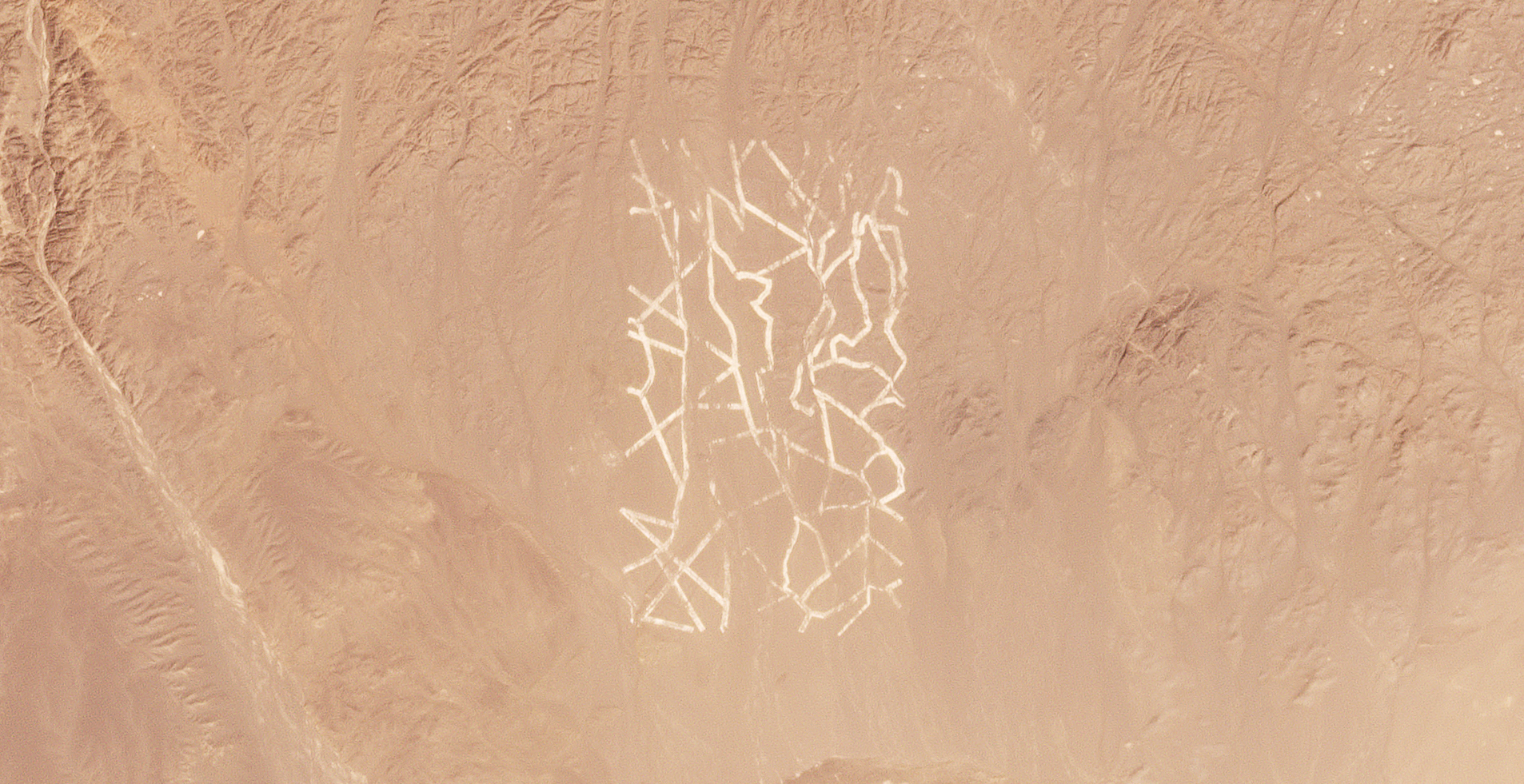 |
PlanetScope • Satellite calibration, Gobi Desert, China • April 5, 2022 |
In this week’s issue:
Having trouble viewing images? Then read this issue on Medium! |
|
|
|
|
FEATURE STORYGeoglyphs
From cave paintings in Earth’s belly to flagpoles on the Moon, leaving a mark is one of our species’ signature moves. In fact, our visual art is older than writing; graffiti predated books. But in an age marked by our profound impact on the planet—an impact so stratigraphically deep it marks a new geological epoch—we’re paying more attention to our impressions left behind. We’re learning how to balance our desire to minimize our footprint with a primal need to declare “we were here.”
Across Earth’s surface is a tapestry of patterns: natural, accidental, and intentional. Look out the window of a plane and you’ll see cities and fields aligned gridlike and fractals emerging from mountain ranges to tributaries. But occasionally something unexpected pops out. A symbol intentionally etched into Earth’s surface designed only to be seen by those above. They’re called geoglyphs, and they run the gamut from millenia-old pictographs to Soviet-era pentagrams. So this week we’re diving into some of our favorites.
|
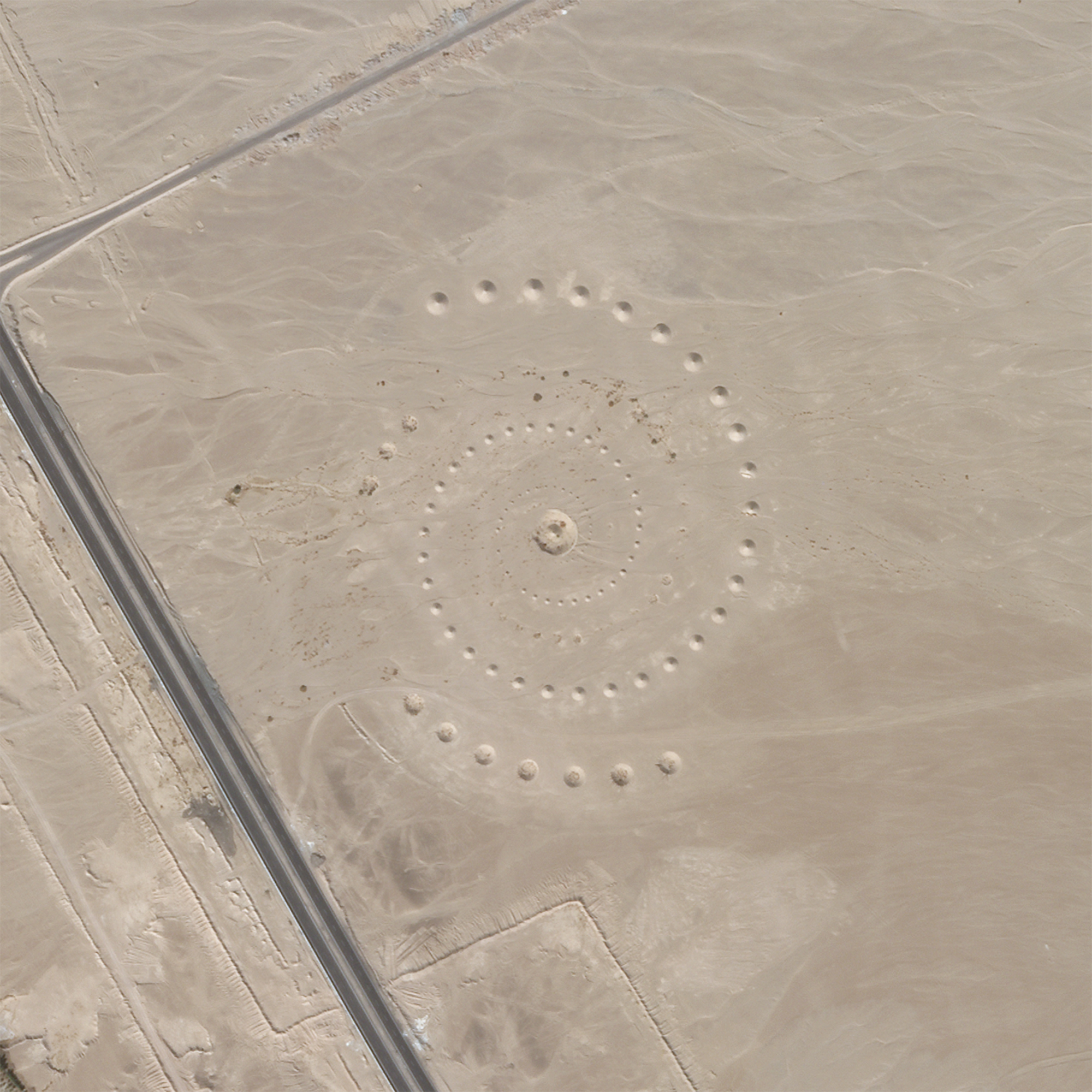 |
SkySat • Desert Breath, Hurghada, Egypt • December 2, 2020 |
Two thousand years ago, an ancient culture carved a series of images into the Peruvian plain: a spider, a monkey, a condor, flowers, triangles, and spirals. The Nazca Lines are possibly the most famous of Earth’s geoglyphs and are some of its oldest. The area’s dry climate helped preserve the images, but their creation and purpose are still a bit of a mystery. |
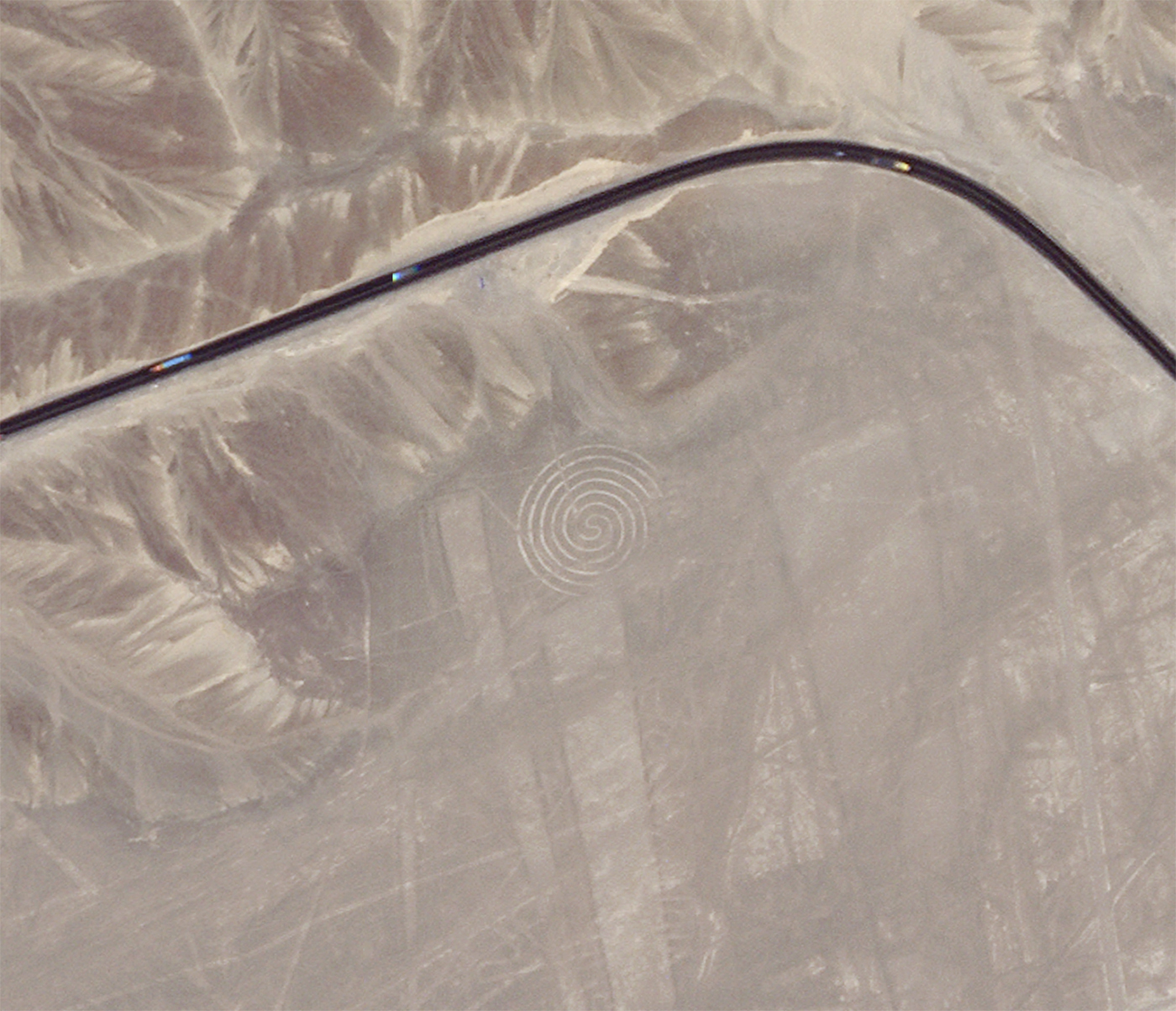 |
SkySat • Espiral, Nazca Lines, Peru • November 18, 2022 |
Add 2.2-mile (3.5-km) tall men to the list of incredible sights found in Australia. A pilot first noticed the giant weapon-wielding hunter, known as the Marree Man, in 1998. But as is the case with many of these geoglyphs, its creation is uncertain. It is suspected, however, to be made professionally and likely recently. |
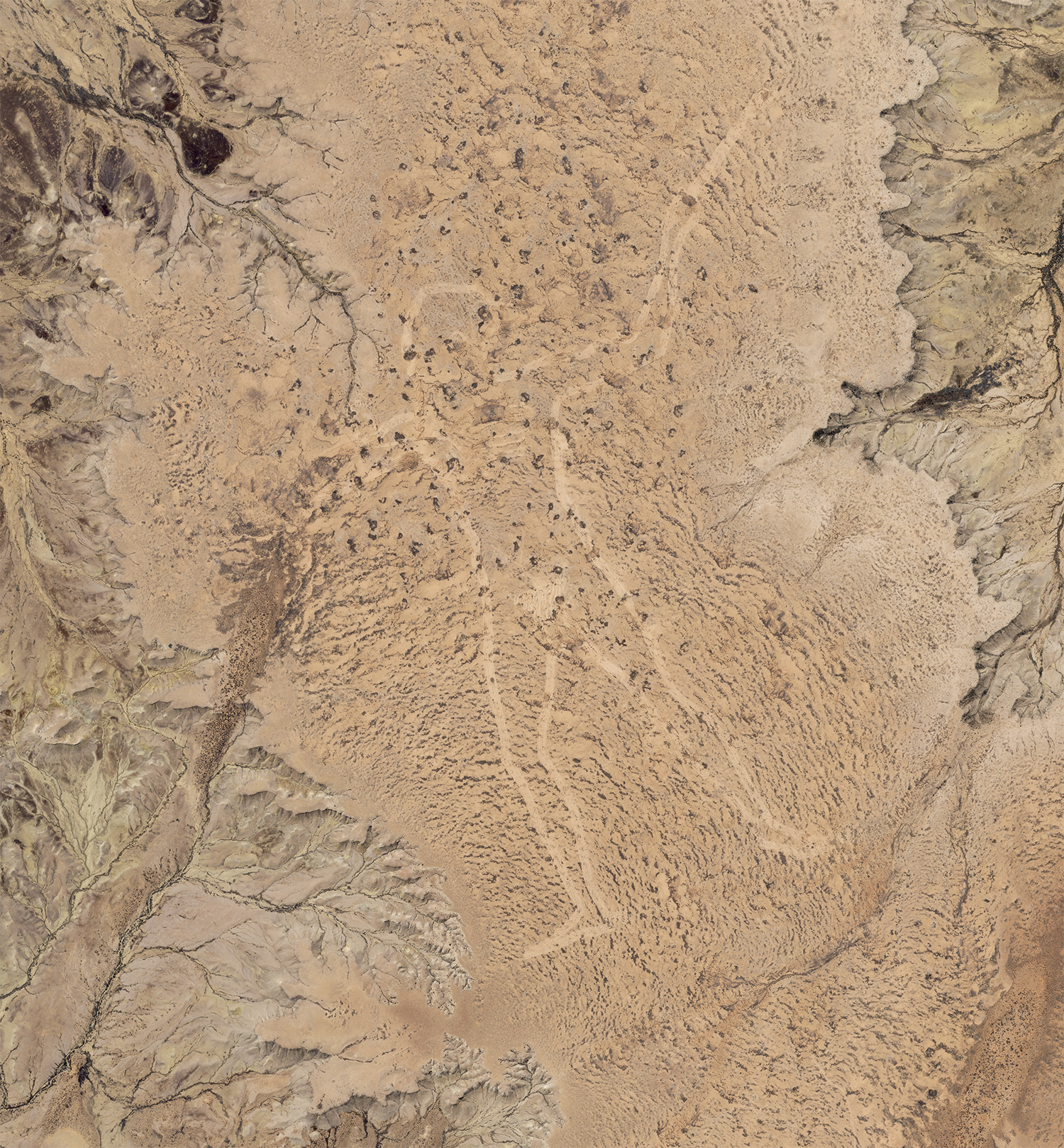 |
SkySat • Marree Man, Callanna, Australia • March 25, 2023 |
Geoglyphs are impressive large-scale artistic pieces. Earthworks, or land art, is the practice of using landscapes as canvas. The first image shown in this issue, Desert Breath, was made by digging 89 holes (negative geoglyphs) and piling up 89 cones (positive geoglyphs) in a spiraling pattern. And artist Robert Smithson created the 1,500-foot (457-meter) Spiral Jetty(1970) at the edge of the Great Salt Lake, where seasonal fluctuations alternatively submerge or reveal its coil. |
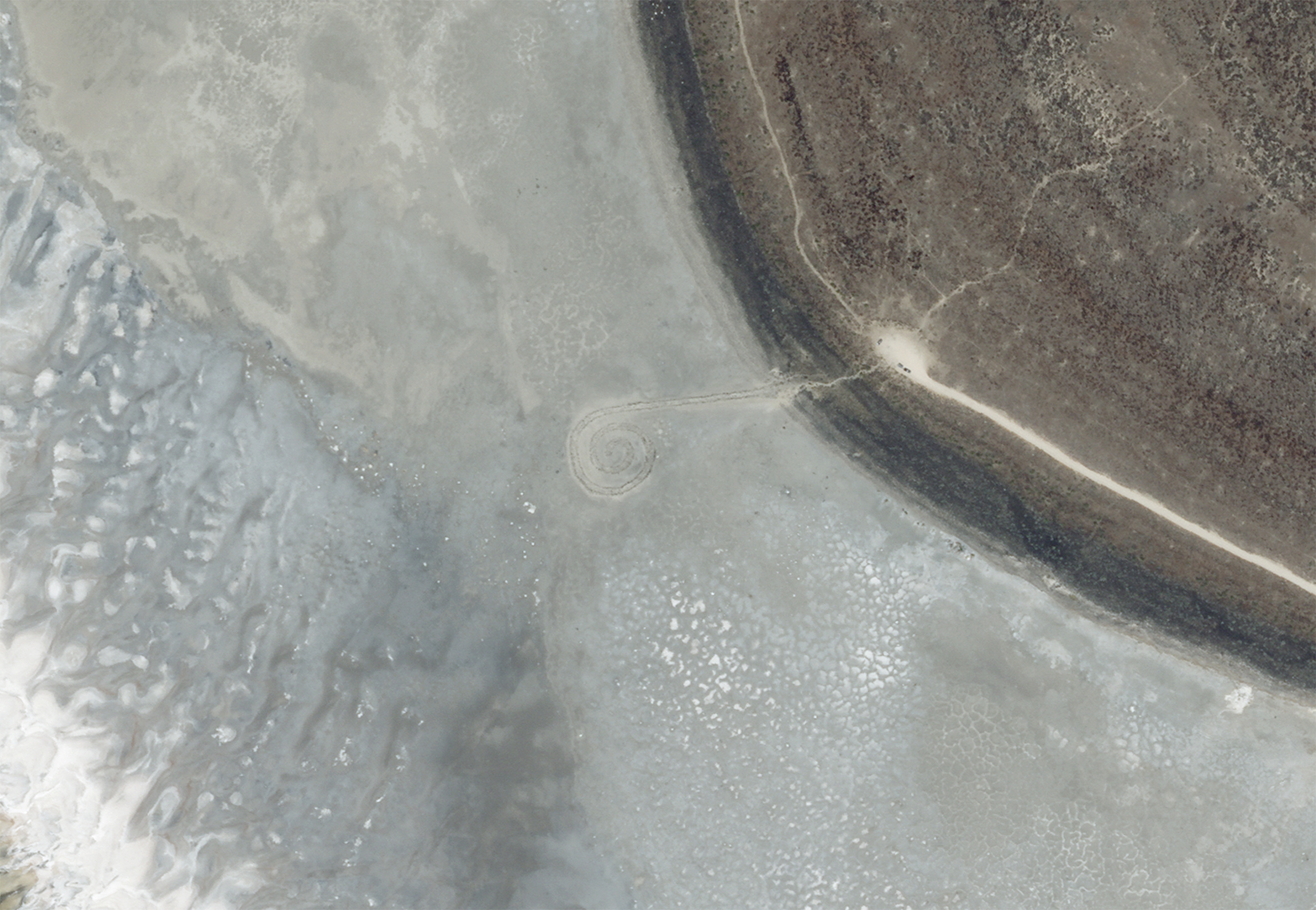 |
SkySat • Spiral Jetty, Corinne, Utah, USA • June 22, 2021 |
Many geoglyphs are shrouded in mystery, arming conspiracy theorists with just enough room to speculate on their puzzling origins. And when you get odd Illuminati-shaped markings in the middle of the desert near Area 51, well you’ve got what the crackpots call a jackpot. |
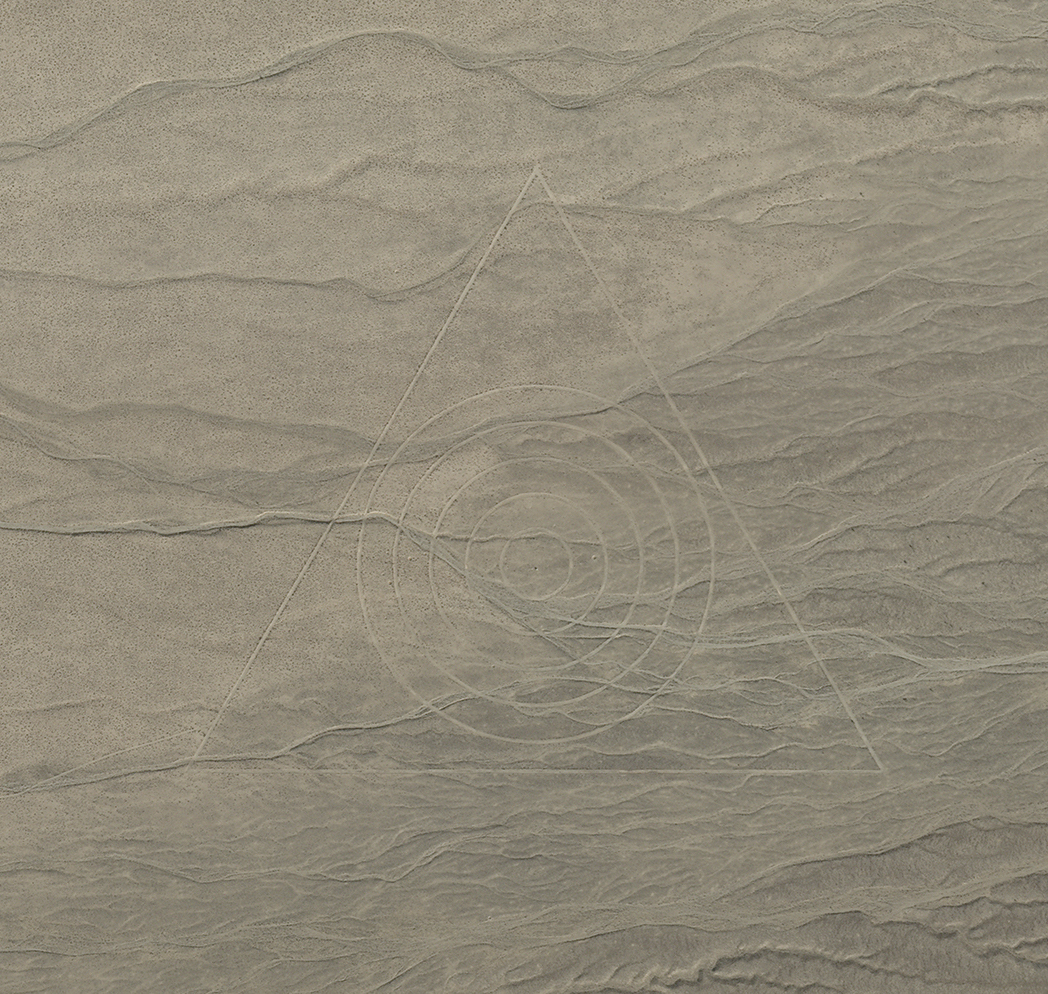 |
SkySat • Geoglyph, Nye County, Nevada, USA • February 19, 2023 |
These geoglyphs are, in all likelihood, simply used by the air force. Scooch a bit farther down from the giant triangle and you’ll find a target, like an X marks the spot for pilots. Apparently the “Leave No Trace” principles don’t apply to special desert government operations. |
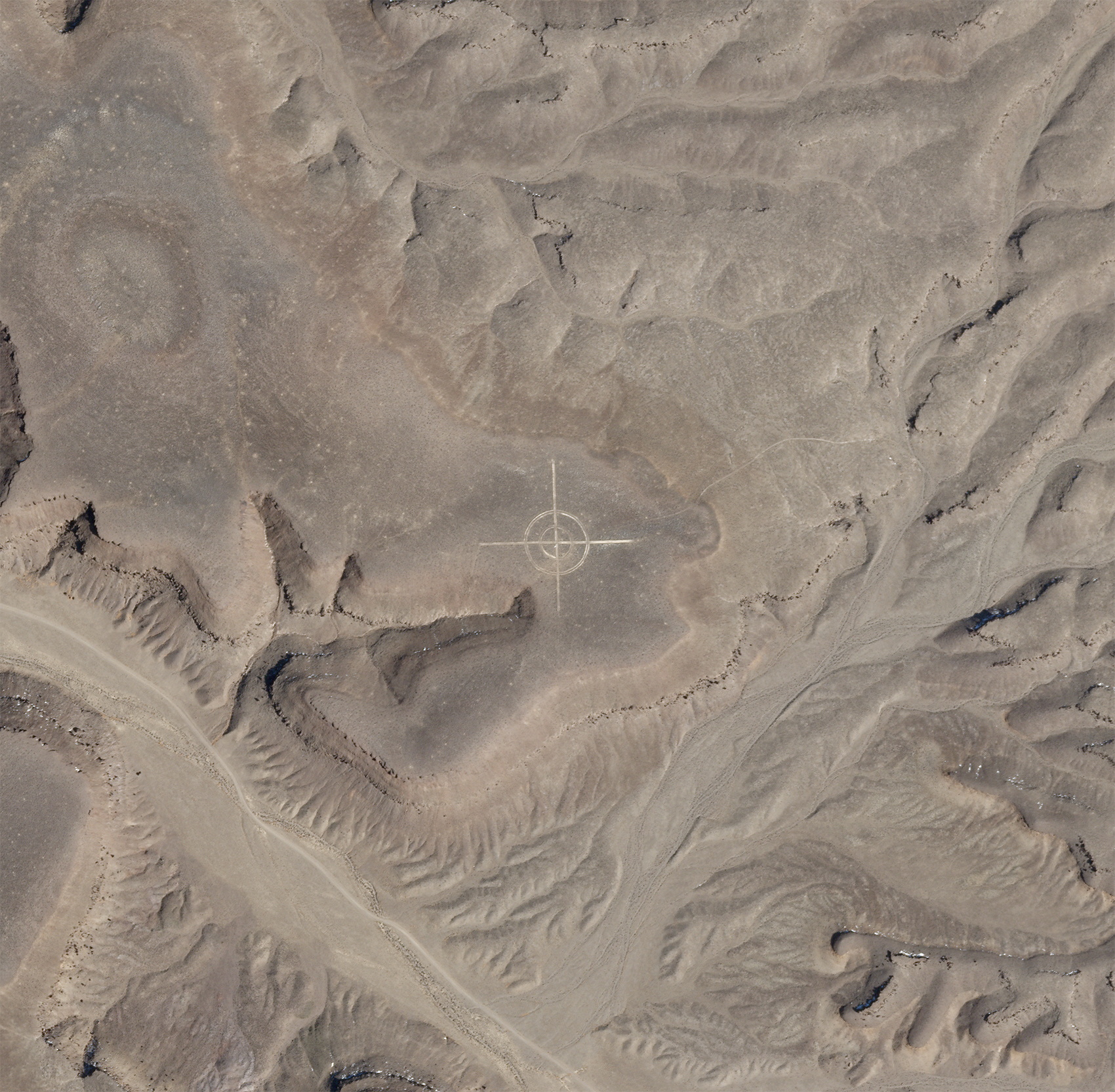 |
|
SkySat • Giant target, Nye County, Nevada, USA • February 19, 2023 |
We’re more interested in Unidentified Land Objects than UFOs, but there are some curtains even we’re hesitant to peer behind. This pentagram in Kazakhstan appears ominous at first, but it’s really just an abandoned Soviet-era park. |
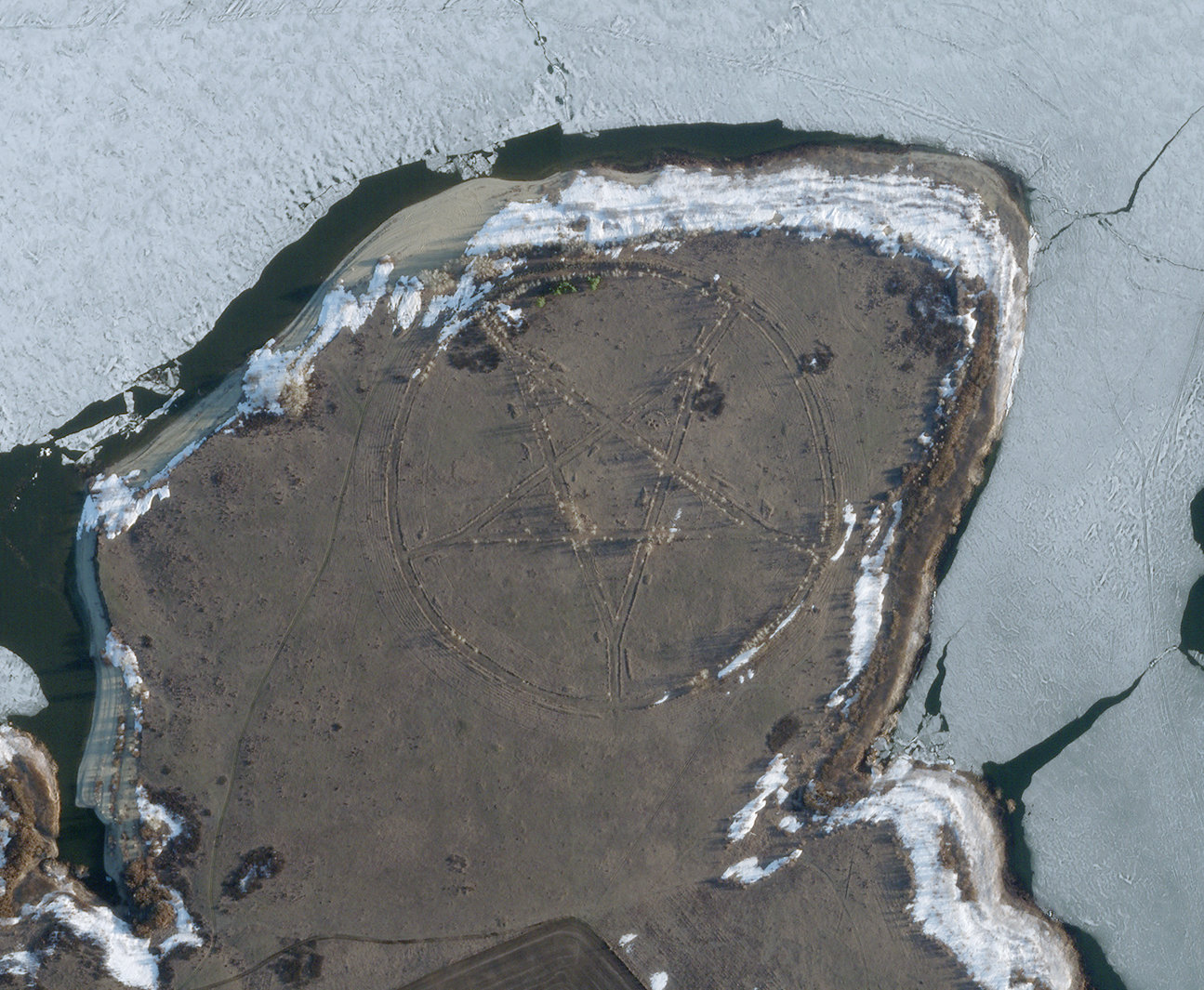 |
SkySat • Pentagram, Denisov District, Kazakhstan • April 21, 2021 |
While not technically geoglyphs, we felt remiss not to include these two examples from Argentina. These designs weren’t made by etching, but through growth. The first image shows Lionel Messi after last year’s World Cup win in a portrait as elusive as he is on the pitch. And the second is a tree guitar planted by a man to commemorate the loss of his wife. A touching tribute made through one of our oldest art forms. |
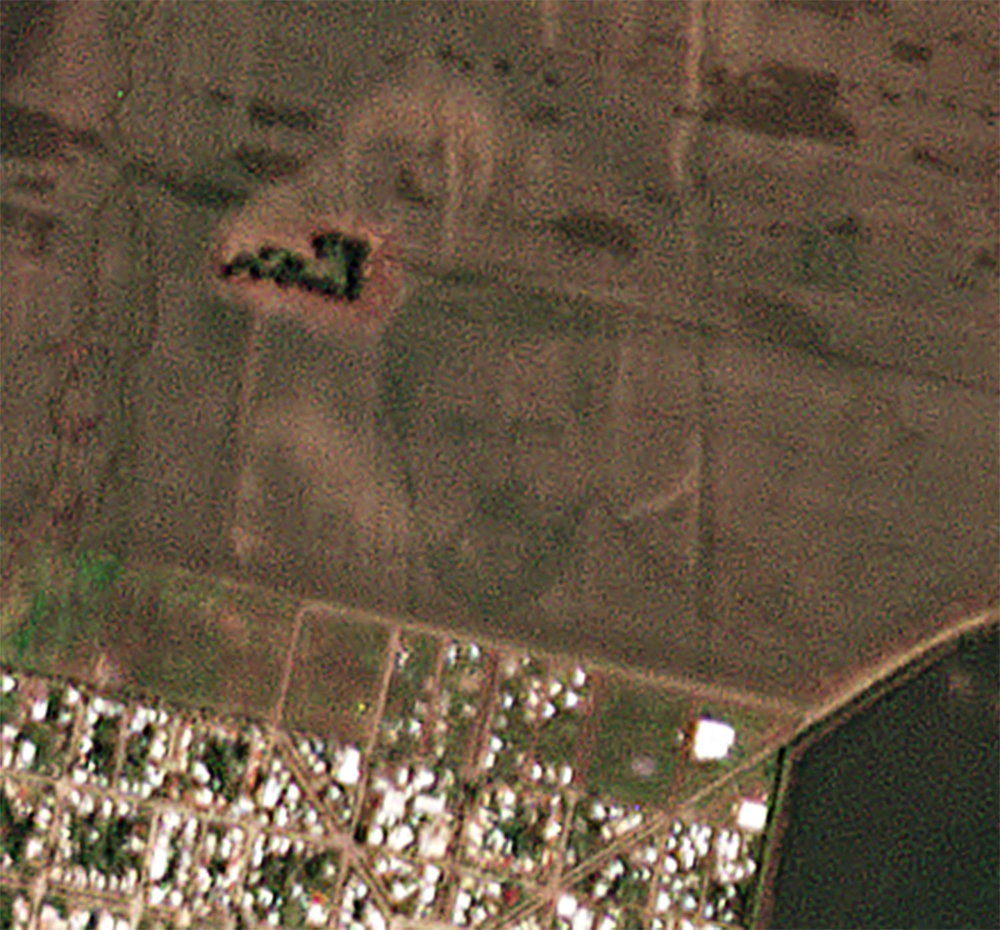 |
PlanetScope • Messi, Los Condores, Argentina • January 13, 2023 |
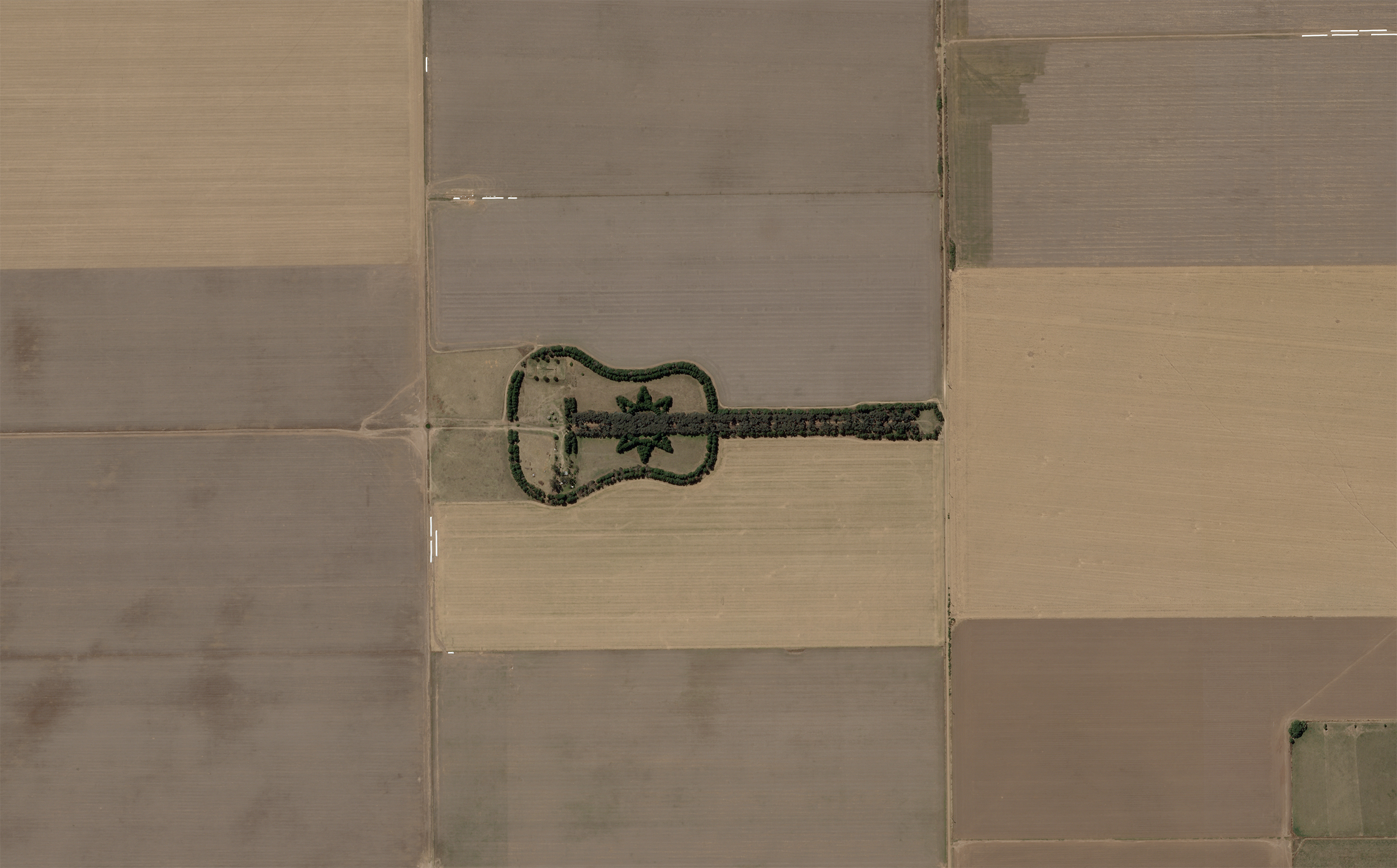 |
SkySat • Tree guitar, Córdoba, Argentina • October 2, 2022 |
|
|
|
|
|
|
|
|
|
|
|
In the NewsTornado
A powerful tornado struck Mississippi over the weekend, tragically killing at least 25 people and injuring many. The wedge tornado—named because of its large width—traveled nearly 60 miles (97 km) across the state. Satellite images from before and after the storm show its trail and the wake of destruction as it passed through Rolling Fork. |
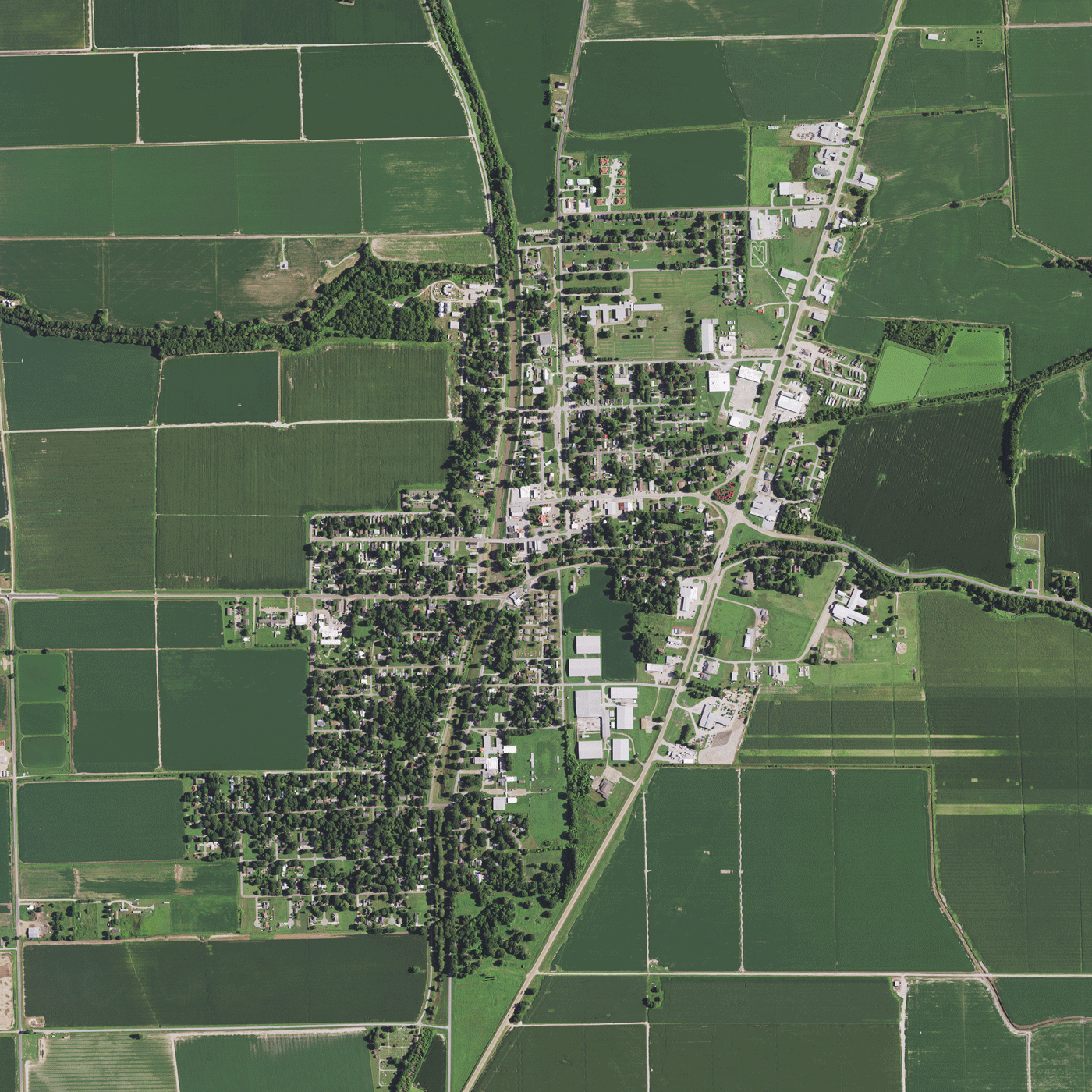 |
SkySat / NAIP image courtesy of the USDA Farm Service Agency • Rolling Fork, Mississippi, USA • July 13, 2020 - March 25, 2023 |
 |
SkySat Rolling Fork, Mississippi, USA • March 25, 2023 |
|
|
|
|
|
In the NewsBalloons
Last week, The New York Times published their investigation of the Chinese balloon incident in an arching story that starts with helium and ends with a heat-seeking missile. Reporters used AI software from Synthetaic to comb through Planet’s satellite data and find every appearance of the balloon’s stoplight-looking pattern. Its journey from China to South Carolina was filled with as much drama (and grumpy older men) as Pixar’s Up. But the piece’s real eye-opener is how AI and satellites can work in tandem to accomplish previously unthinkable feats. |
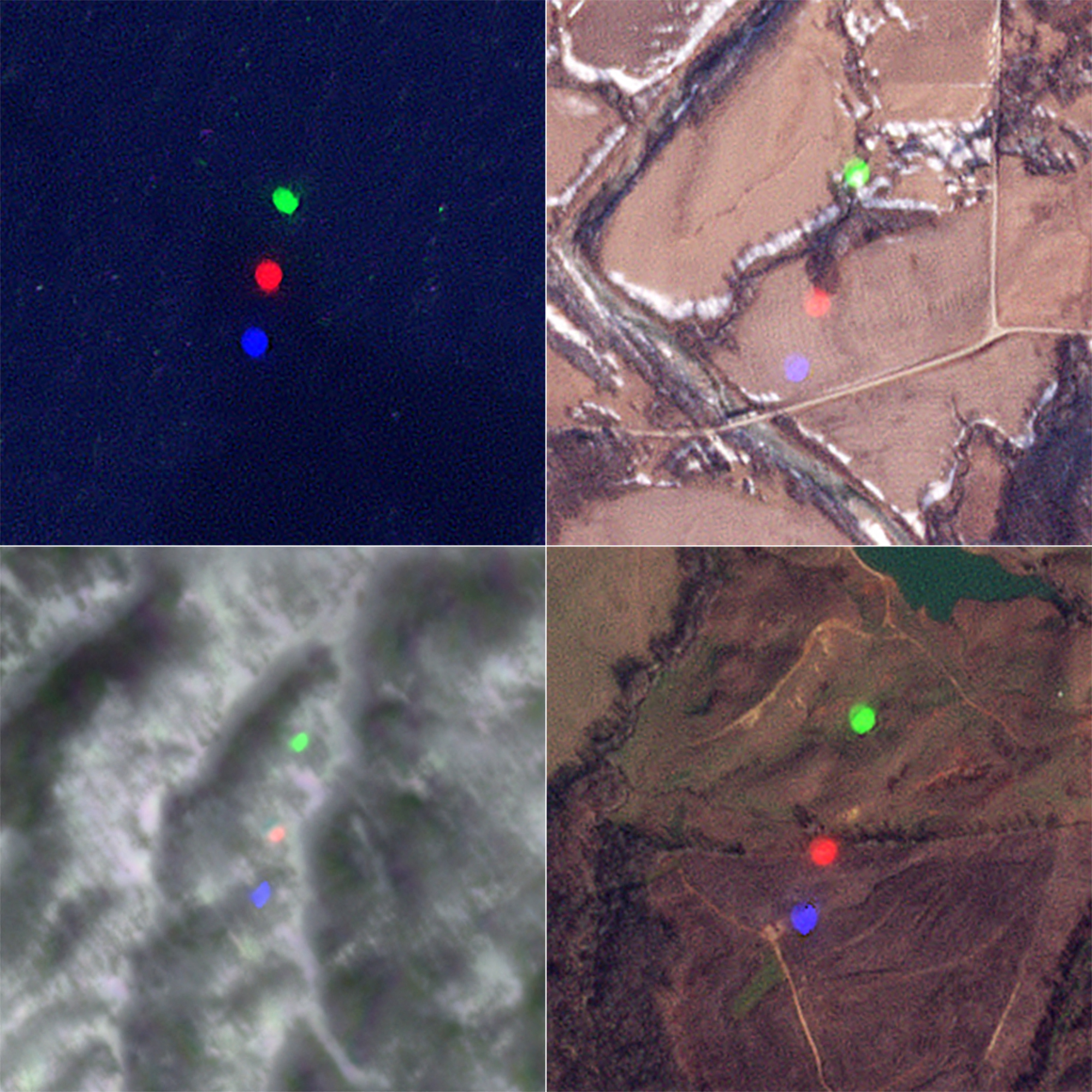 |
PlanetScope • Chinese balloon over different areas • January - February, 2023 |
|
|
|
|
|
Weekly Revisit
Last week we rewound the clock and shared some 10-year timelapses. So check it out in case you missed it and read more stories from the full archive if you’re extra curious. |
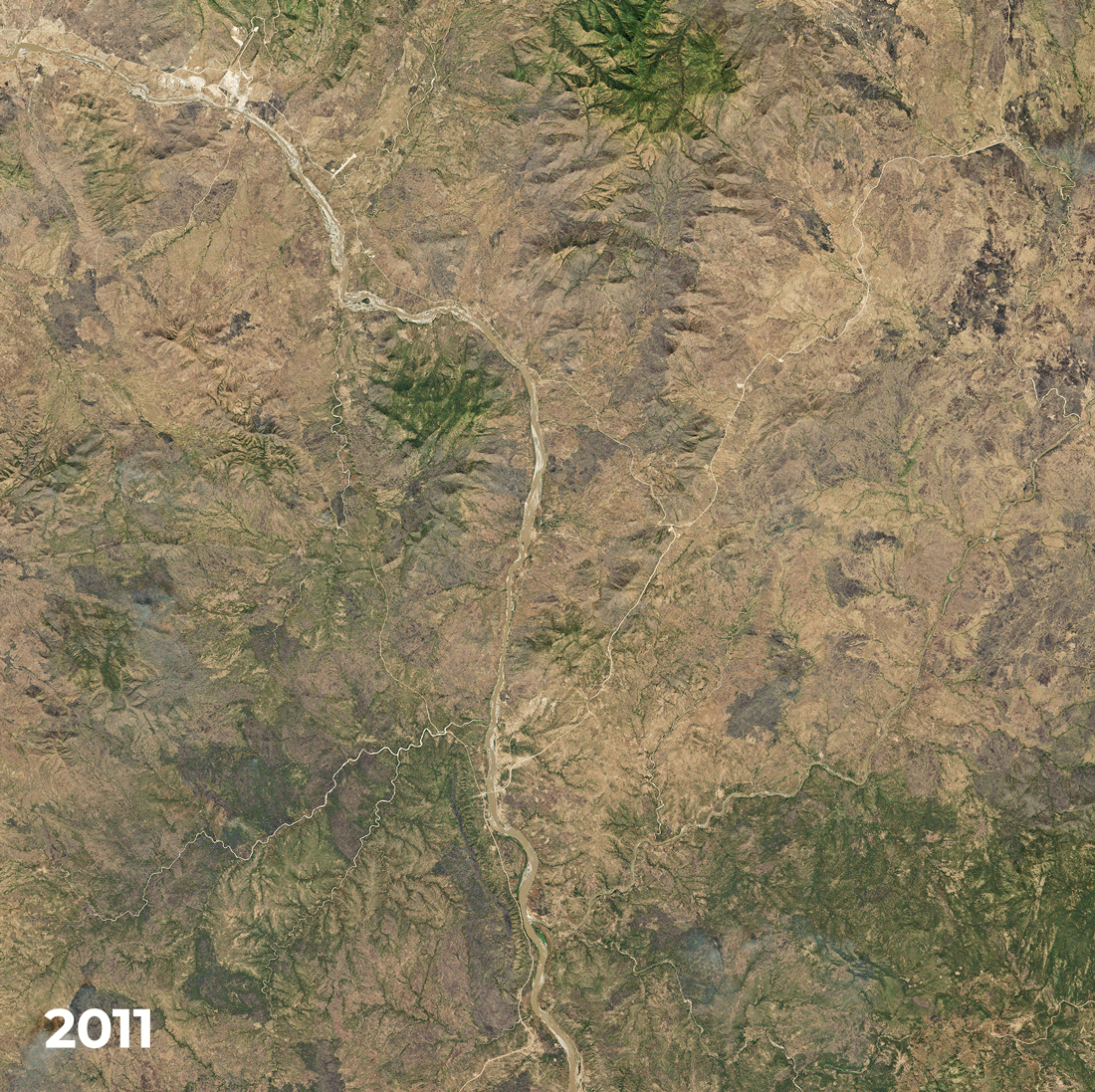 |
RapidEye & PlanetScope • Grand Ethiopian Renaissance Dam, Bameza, Ethiopia • November 27, 2011 - 2022 |
|
|
|
|